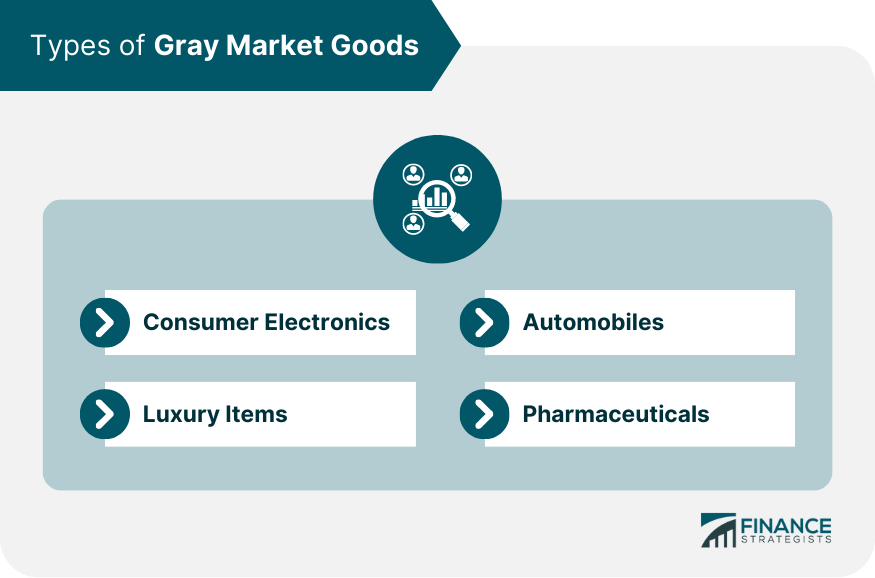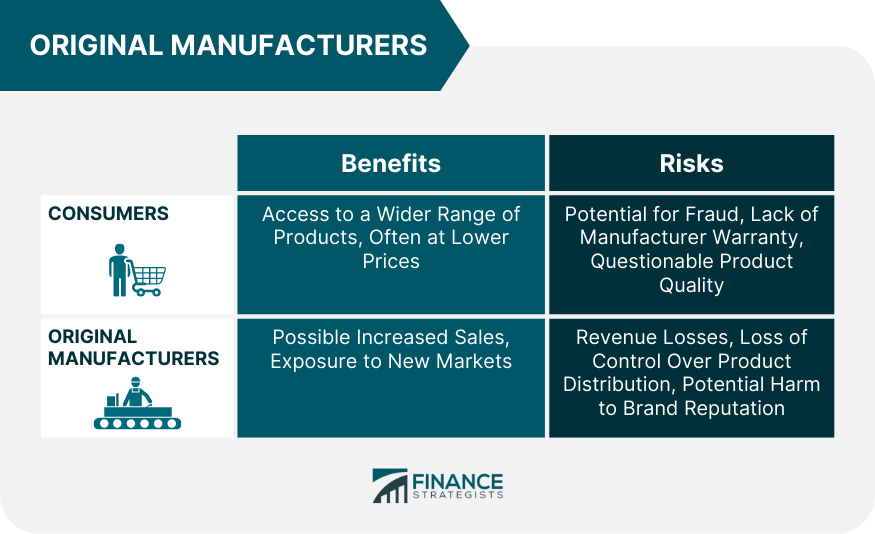The gray market, also known as the parallel market, refers to the trade of goods through distribution channels not authorized by the original manufacturer or trademark proprietor. Although this process operates legally, it bypasses the manufacturer's intended distribution channels. Gray markets usually emerge when price differentials exist for a product in different countries, prompting middlemen to buy the product in a low-price country and resell it in a high-price country. The impact on consumers can be both beneficial and detrimental. On the positive side, consumers can often purchase goods at lower prices. However, they may also face issues such as a lack of warranty or poor after-sales service. For businesses, the gray market may undermine their pricing strategies and dilute the brand image. Understanding the gray market is important as it impacts global trade, consumer choices, and business strategies. The gray market primarily operates by exploiting price differentials between different regions. For instance, a dealer may purchase goods in a country where the price is low and then resell those goods in a country where the prices are high. The extent and prevalence of gray markets vary across industries and geographical regions. It is more prevalent in industries with significant price disparities, like the tech and luxury goods industries, and in regions with high import duties or stringent market regulations. Consumer electronics, such as smartphones, laptops, and video game consoles, are popular gray market items. This is often due to the difference in release dates and prices across different regions. Luxury items, like designer bags, watches, and high-end clothing, are also common. Consumers in countries with higher import taxes or late release dates can often find these items cheaper and sooner on the gray market. Imported cars, especially luxury and sports cars, often find their way into the gray market. Enthusiasts are willing to pay a premium to get unique, overseas models not available in their home country. Pharmaceuticals are another notable gray market category, often due to disparities in health regulations and pricing across countries. Price differentials are a major driver. When the same product is priced significantly differently in two markets, there is an opportunity for gray market dealers to profit from the disparity. Imbalances in supply and demand also contribute. If a product is scarce or not officially available in a particular market, consumers may turn to the gray market. Market restrictions and regulatory hurdles, including import duties and product standards, can encourage gray market trade. If it's cheaper or easier to buy a product through unofficial channels, consumers will likely do so. For consumers, the gray market can offer access to products not available in their region and often at lower prices. It also provides an alternative when official channels can't meet demand. However, there are risks, including the lack of manufacturer warranty, questionable product quality, and the potential for fraud. For manufacturers, the gray market can lead to loss of revenue, control over the distribution of their products, and the ability to manage their brand image. Moreover, if gray market products are of inferior quality or lead to a poor customer experience, this can harm the brand's reputation. While the gray market isn't illegal, it often skirts the edges of the law. The sale of gray market goods can violate agreements between manufacturers and authorized resellers or infringe on import regulations. There can also be issues concerning intellectual property rights and warranties. Gray market goods may not be covered by a manufacturer's warranty, and brands may have little recourse if their products are sold in this manner. Ethically, the gray market is a contentious issue. While it offers consumers more choices, it undermines the efforts of manufacturers to control their product distribution and pricing. A uniform global pricing strategy can reduce the price differentials that gray markets exploit. However, this can be challenging to implement due to varying taxes, duties, and costs of living across countries. Improving distribution to ensure that products are available when and where consumers want them can reduce the appeal of the gray market. Pursuing legal measures to protect intellectual property rights and enforce distribution agreements can also help. Distinguishing between the black, white, and gray markets offers insight into different sectors of the economy. The type of market can significantly impact consumers, producers, and regulators. The black market traffics in goods and services that are illegal or heavily regulated, like illicit drugs, illegal firearms, or unlawfully obtained items. The white market consists of official, legal sales channels consumers interact with daily for authorized trade of goods and services. The gray market deals with legal goods sold outside of the manufacturer’s approved channels, such as unreleased electronics or resold event tickets. Black market transactions are secretive and unregulated due to their illicit nature, often conducted in hidden venues or through encrypted online platforms. The trajectory of the gray market will be largely dictated by shifts in the global economic landscape and the accelerating expansion of online commerce. E-commerce platforms has both simplified and amplified gray market operations by enabling vendors to connect with a diverse global customer base. However, this digital realm also equips brands with sophisticated tools to identify and mitigate unauthorized sales, thereby exercising some control over gray market activities. Globalization and changes in trade policies can also impact the gray market. Reduced trade barriers can lead to a decrease in gray market trade, while protectionist policies can have the opposite effect. Looking ahead, the gray market is poised for growth, propelled by global economic and technological trends. The gray market is a nuanced sphere of trade, navigating between official and unauthorized channels, offering both advantages and risks to consumers and manufacturers alike. With e-commerce facilitating global reach, the gray market is poised to grow, albeit with impending challenges. Measures like strategic pricing, improved distribution, and legal actions can be leveraged to curb its influence. Definition of Gray Market
Mechanics of the Gray Market
How the Gray Market Operates
Differences Across Industries and Regions
Types of Gray Market Goods
Consumer Electronics
Luxury Items
Automobiles
Pharmaceuticals

Reasons Behind the Existence of the Gray Market
Price Differentials
Supply and Demand
Market Restrictions and Regulations
Implications of the Gray Market
Impact on Consumers
Benefits
Risks
Impact on Original Manufacturers
Revenue Losses
Brand Reputation

Legal and Ethical Considerations of the Gray Market
Legality of Gray Market Goods
Intellectual Property Rights and Warranties
Ethical Concerns
Strategies to Counter the Gray Market
Pricing Strategy
Distribution Strategy
Legal Measures
Comparison to the Black Market and White Market
Legality of Goods and Services
Sales Channels and Authorization
Future of the Gray Market
Role of E-commerce
Impact of Globalization and Trade Policies
Potential Growth and Challenges
This expansion, while presenting distinct opportunities, also flags pertinent challenges for stakeholders - consumers, manufacturers, and regulatory bodies, necessitating adaptive strategies and robust regulatory mechanisms.Final Thoughts
This parallel market capitalizes on price differentials, supply-demand imbalances, and stringent market regulations to provide often cheaper and earlier access to goods such as electronics, luxury items, automobiles, and pharmaceuticals.
While consumers can enjoy lower prices and wider product availability, they face potential drawbacks like fraud and lack of warranties. Manufacturers, on the other hand, grapple with revenue losses and reputational damage.
As globalization and trade policies evolve, understanding the gray market becomes crucial for consumers, businesses, and policymakers navigating this complex commerce landscape.
Gray Market FAQs
The gray market, also known as the parallel market, is the trade of legal goods through unauthorized channels. These markets usually arise when price differentials for a product exist between countries, prompting dealers to purchase and resell the product in higher-priced markets.
Gray markets primarily operate by exploiting price differentials between different regions. Dealers buy goods in a country where the price is low and then resell those goods in a country where the prices are high. This activity is particularly prevalent in industries with significant price disparities and in regions with high import duties or stringent market regulations.
Common goods found in the gray market include consumer electronics, luxury items, automobiles, and pharmaceuticals. These items have significant value, demand, and price variations across different regions, making them attractive for gray market trade.
For consumers, the gray market can offer access to a wider range of products, often at lower prices. However, it also presents risks such as potential fraud, lack of manufacturer warranty, and questionable product quality. For manufacturers, gray markets can lead to loss of revenue, control over product distribution, and potential harm to brand reputation.
Manufacturers can counter the gray market through strategies like uniform global pricing, improved distribution, and legal measures to protect intellectual property rights and enforce distribution agreements. However, these strategies need to be tailored to specific industries and market conditions.
True Tamplin is a published author, public speaker, CEO of UpDigital, and founder of Finance Strategists.
True is a Certified Educator in Personal Finance (CEPF®), author of The Handy Financial Ratios Guide, a member of the Society for Advancing Business Editing and Writing, contributes to his financial education site, Finance Strategists, and has spoken to various financial communities such as the CFA Institute, as well as university students like his Alma mater, Biola University, where he received a bachelor of science in business and data analytics.
To learn more about True, visit his personal website or view his author profiles on Amazon, Nasdaq and Forbes.











